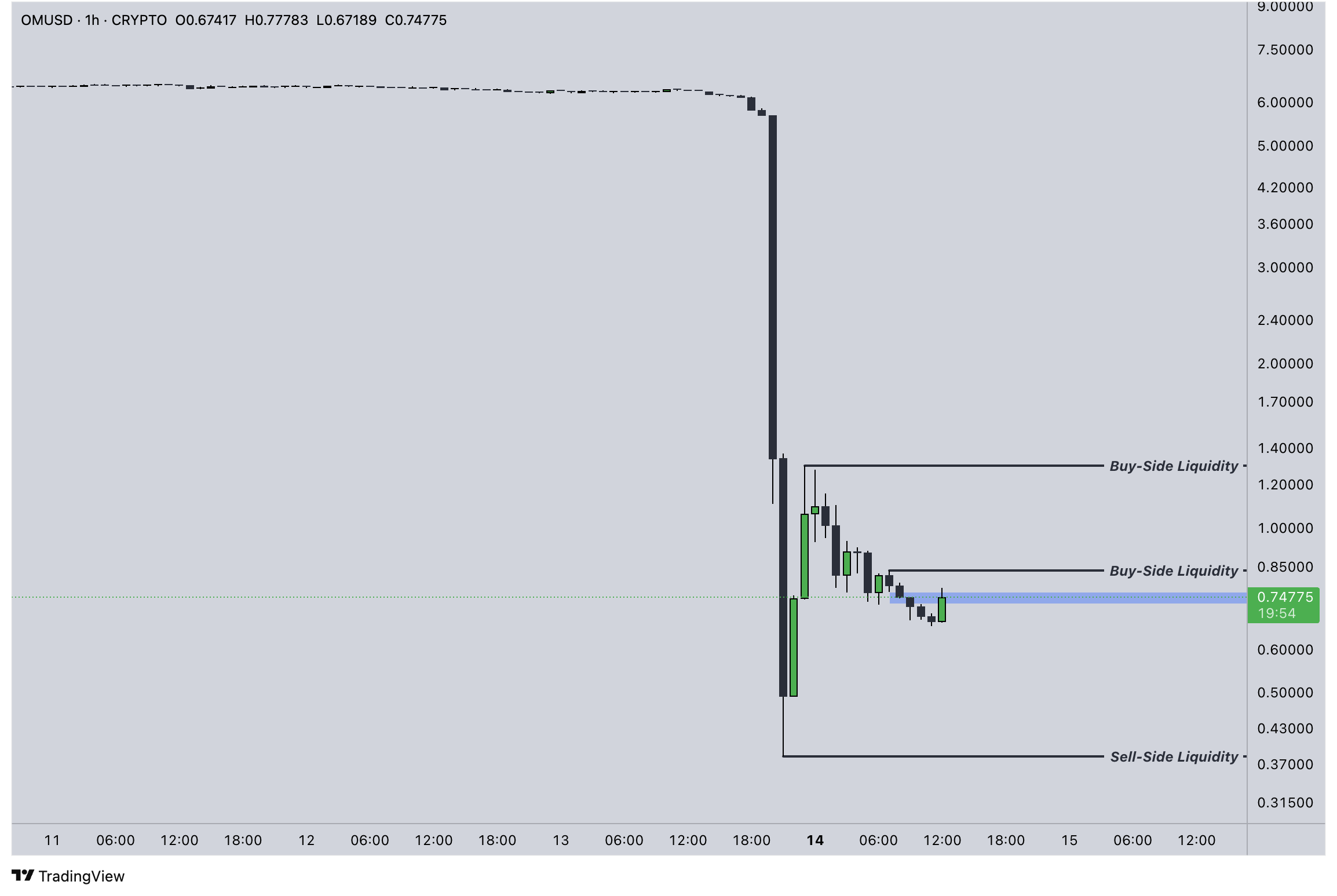Why Did OM Crash?

By Monday morning, the crypto community was hit with major news. The Mantra project, known on exchanges by its ticker OM, experienced an 84% price collapse on Sunday — an undeniably dramatic drop that shook many traders and investors.
Understandably, the question on everyone’s mind is: What happens next? Is this the end of the road for OM, or could there still be a path to recovery? At BITmarkets, we’ve taken a closer look at the situation, analyzing both the fundamental context and technical outlook of the token.
In this analysis, we’ll break down the potential scenarios and offer insight into what investors can learn from such a steep correction — and how to position themselves moving forward.
1-hour time frame analysis

OMUSD - 1 Hour Time Frame
From a technical standpoint, the situation following OM’s sharp decline appears to be stabilizing, with price action slowing and volatility beginning to taper off.
As is often the case after such a dramatic move, new liquidity levels are starting to form — either to the upside (Buy-Side Liquidity) or downside (Sell-Side Liquidity).
In this context, it’s advisable for traders to wait patiently for confirmation. This could come either through a price move above a key high, triggering a Buy-Side Liquidity sweep, or a drop below a recent low, activating Sell-Side Liquidity.
However, it’s important to emphasize that liquidity sweeps alone are not sufficient — they must be accompanied by the formation of a clear resistance or support zone in order to validate an entry.
Mantra price target
As we’ve often pointed out, a strong trading plan involves separating analysis from actual entry setups. One particularly effective long-term setup occurs when price dips below a key low — triggering liquidity — and in the process forms a well-defined resistance zone, followed by an impulsive recovery above that zone.
This type of price action typically suggests that the initial drop was a liquidity event rather than the beginning of a sustained downtrend. As a result, the probability of a bullish continuation increases, and traders may look to enter buy positions with greater confidence.
In the current scenario, we’re observing similar price behavior. If you’re looking for guidance on support and resistance zones, we’ve marked a key resistance zone on the attached chart to help visualize it.
This zone is defined by three candles — specifically, the low of the first candle and the high of the third, with the second candle serving as a middle reference point.

Try to invite your friends and earn together
10% of trading fees of your friends and 5% from the earnings of your friends.

